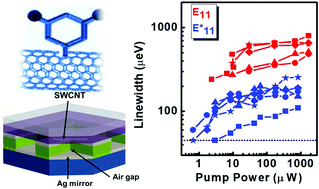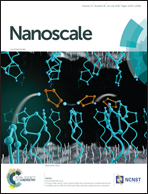Suppression of exciton dephasing in sidewall-functionalized carbon nanotubes embedded into metallo-dielectric antennas
Abstract
Covalent functionalization of single-walled carbon nanotubes (SWCNTs) is a promising route to enhance the quantum yield of exciton emission and can lead to single-photon emission at room temperature. However, the spectral linewidth of the defect-related E11* emission remains rather broad. Here, we systematically investigate the low-temperature exciton emission of individual SWCNTs that have been dispersed with sodium-deoxycholate (DOC) and polyfluorene (PFO-BPy), are grown by laser vaporization (LV) or by CoMoCat techniques and are functionalized with oxygen as well as 3,5-dichlorobenzene groups. The E11 excitons in oxygen-functionalized SWCNTs remain rather broad with up to 10 meV linewidth while exciton emission from 3,5-dichlorobenzene functionalized SWCNTs is found to be about one order of magnitude narrower. In all cases, wrapping with PFO-BPy provides significantly better protection against pump induced dephasing compared to DOC. To further study the influence of exciton localization on pump-induced dephasing, we have embedded the functionalized SWCNTs into metallo-dielectric antenna cavities to maximize light collection. We show that 0D excitons attributed to the E11* emission of 3,5-dichlorobenzene quantum defects of LV-grown SWCNTs can display near resolution-limited linewidths down to 35 μeV. Interestingly, these 0D excitons give rise to a 3-fold suppressed pump-induced exciton dephasing compared to the E11 excitons in the same SWCNT. These findings provide a foundation to build a unified description of the emergence of novel optical behavior from the interplay of covalently introduced defects, dispersants, and exciton confinement in SWCNTs and might further lead to the realization of indistinguishable photons from carbon nanotubes.



 Please wait while we load your content...
Please wait while we load your content...